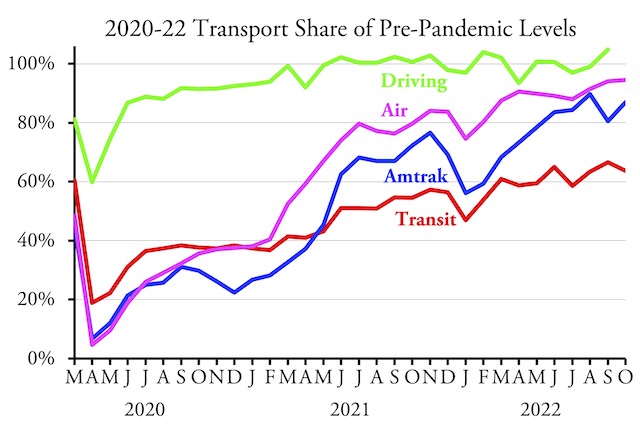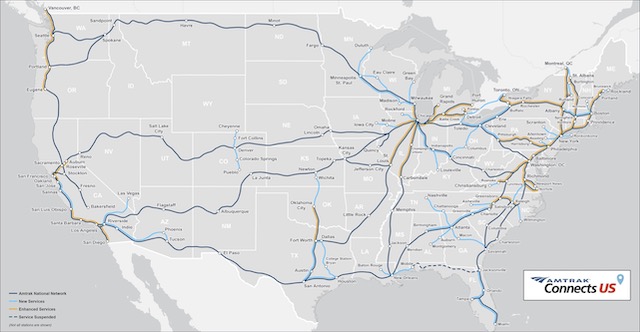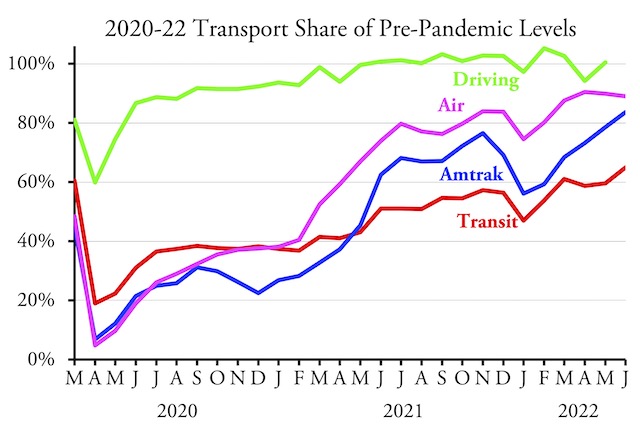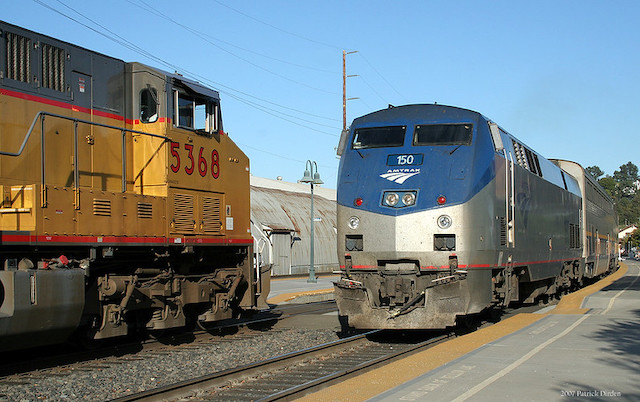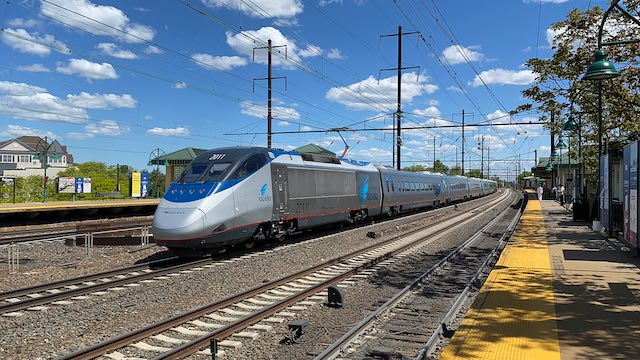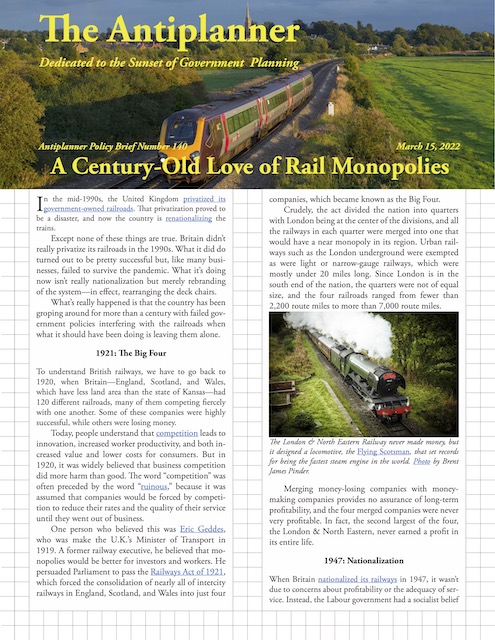Amtrak carried almost 87 percent as many passenger-miles in October 2022 as it did in October 2019, according to the monthly performance report released by the state-owned company yesterday. This is a significant increase from the 80.5 percent recorded in September.
This is an update of a chart posted last week. I’ll provide another update when October driving data are available.
This is still short of the 94.5 percent carried by domestic and international airlines. Domestic air travel alone is even higher, but unfortunately those data are somewhat behind — the latest is for September, when domestic air travel was several percent higher than the average of domestic and international travel. Continue reading

